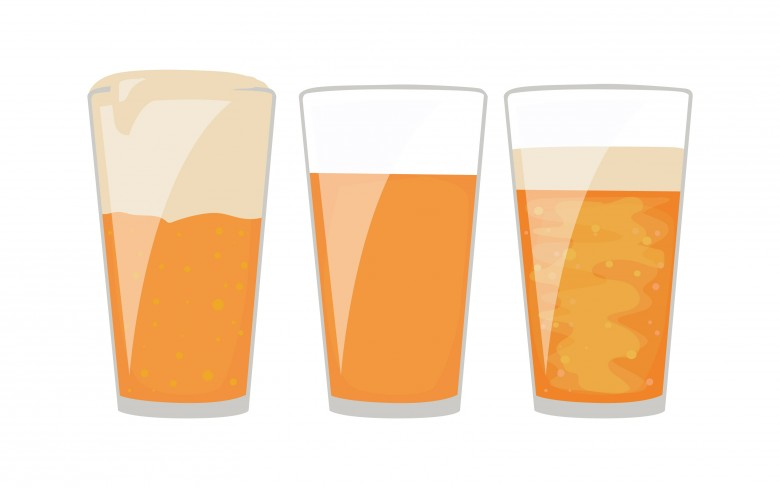If you own or work at a bar or restaurant, you understand that keeping your draft beer dispensing system in proper working condition is an integral part of maintaining your bottom line. When your commercial draft beer system isn’t working properly, you run the risk of creating unhappy customers who may leave your establishment with a less than satisfactory experience to look back on.
Luckily, most common issues with your draft beer system, including foamy, flat, or cloudy beer, are easy to diagnose and troubleshoot. As a rule of thumb, keep in mind that the vast majority of issues can be traced back to one of three things: improper temperature, improper pressure, or general cleanliness.
The following quick guide will arm you with information to help you make the necessary adjustments to ensure that your beer flows freely and your customers remain happy.
 Foamy Beer
Foamy Beer
Instead of being mostly liquid with just the right amount of creamy head on top, the glass is filled with wasteful foam. Here’s what might be wrong:
The temperature is too warm. Lower the temperature in the refrigeration unit that holds your kegs (ideally, to between 36º and 40ºF). If using glycol to dispense, ensure that your glycol bath is set to dispense at that range as well.
The CO2 pressure is too high. Adjust your regulator to lower the CO2 pressure.
The faucet is dirty or broken. Inspect faucet and washers and replace both as needed. Every few weeks, remove and disassemble your faucet, then clean it with hot water and a brush.
The beer hose has kinks or obstructions. Inspect your hose and make corrections, if necessary.
The beer was poured improperly. Be sure to follow the five easy steps laid out in “How to Pour a Perfect Pint.“
Flat Beer
Serving flat beer, or beer that doesn’t have the right level of carbonation, will quickly drive away customers. Beer at its best has a certain effervescence that helps enhance the drinking experience. In many ways, flat beer is the exact inverse problem of beer that is too foamy (or over-carbonated). If your beer is coming out flat, here are some potential problems to address:
The temperature is too cold. Raise the temperature in the refrigeration unit that holds your kegs (ideally, to between 36º and 40ºF). If using glycol to dispense, ensure that your glycol bath is set to dispense at that range as well.
The CO2 pressure is too low. Adjust your regulator to raise the CO2 pressure.
The glass is dirty. Grease is the enemy of carbonation. Ensure your glasses are “beer clean,”and rinse with cold water just before pouring.
Cloudy Beer
Cloudy or hazy beer is unattractive and offputting to say the least. If you wouldn’t want to drink a glass of cloudy beer, why would your customers be any different? If you’re experiencing this problem, try this:
The temperature is not remaining steady. Check your refrigeration unit to ensure that your keg isn’t being exposed to alternating warm and cool temperatures. Never let your keg get above 45ºF.
The beer lines are dirty. For best results, you should clean your beer lines between every new keg. If that’s not possible, aim for no less than once per month. For more information, check out “The Basics of Beer Line Cleaning.”
The beer is old. Beer doesn’t stay good forever. Check the expiration date on the keg and/or institute an inventory management system that helps you keep track of your kegs.
Visit Kegworks.com for all your cocktail needs!


